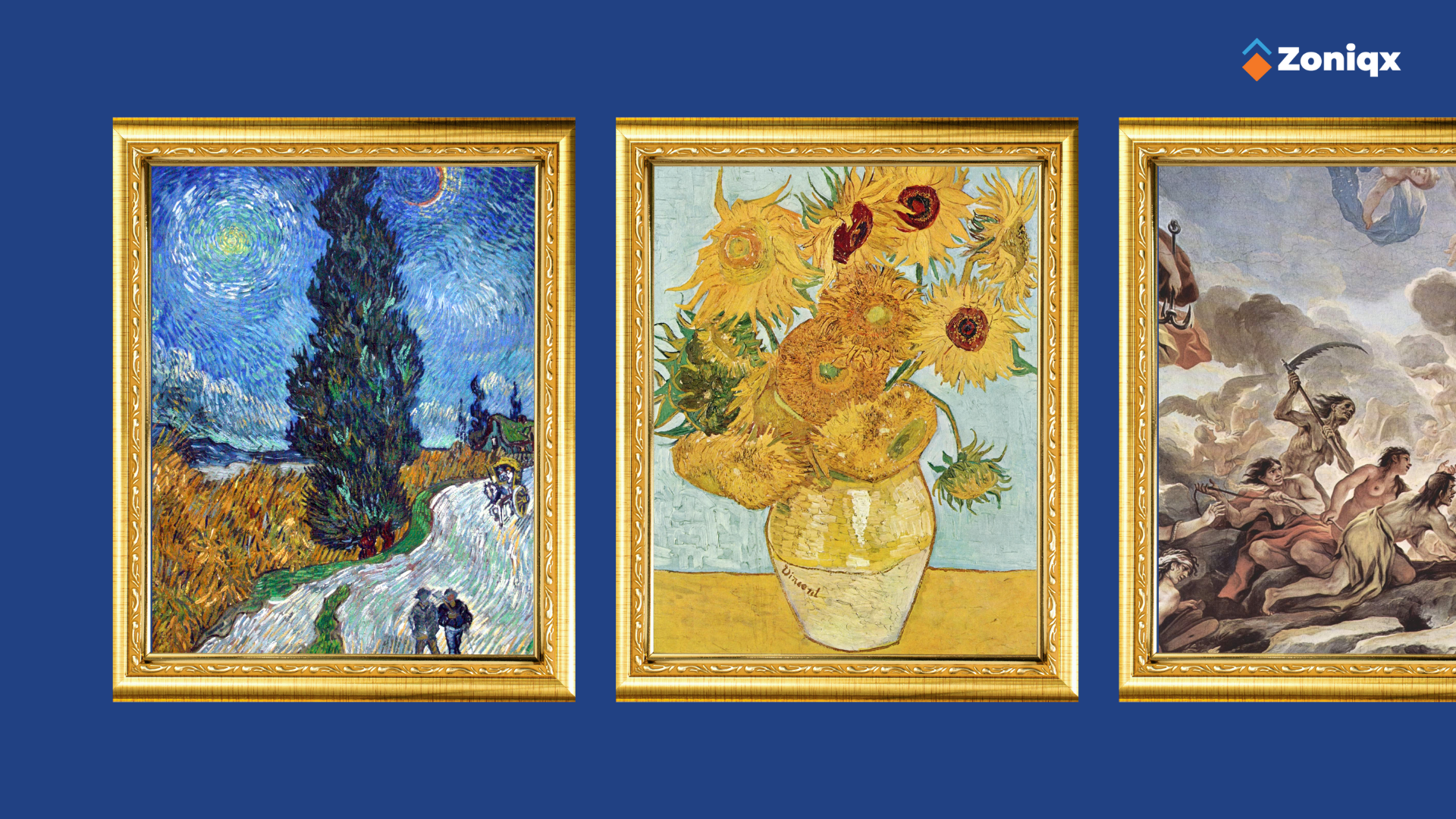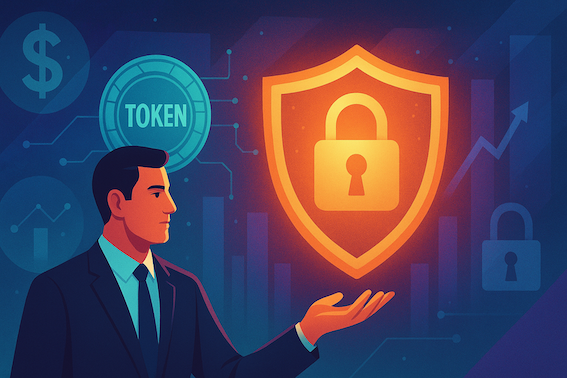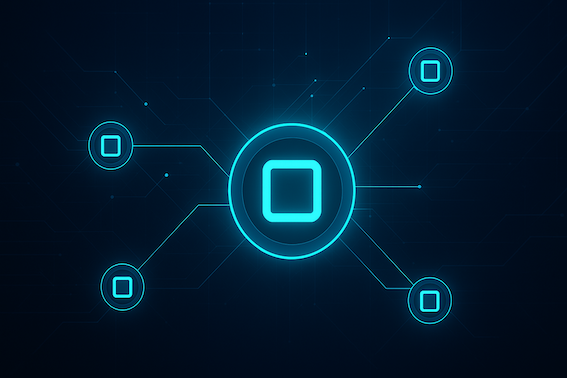Asset Tokenization: Basics, Benefits & Blockchain
Index
- Tokenization Explained
- Fragmentation
- Enhanced Liquidity
- Streamlined Transactions
- Democratizing Ownership: From Billionaires to Blockchain
- Increased Participation
- Collective Action
- Diversification
- Boosting Liquidity: From Static Assets to Vibrant Markets
- Unlocking Capital for Owners
- Increased Investment Opportunities
- Enhanced Market Efficiency
- The Current Landscape: Tokenization Takes Root
- Pioneering Green Finance: Hong Kong's Tokenized Green Bond
- Democratizing Real Estate: Brick by Digital Brick
- Fine Art Finds a New Canvas: Tokenization of Masterpieces
- Unveiling the Hidden Story: Supply Chain Transparency with Tokens
- The Future of Tokenization: A Symphony of Innovation
- Fractional Ownership of Intellectual Property
- Tokenized Supply Chains
- Unlocking the Value of Data
- Challenges and Considerations: Navigating the Uncharted Territory
- Conclusion: A Paradigm Shift in Ownership
Imagine a world where a fraction of your favorite artist's next masterpiece resides not in a vault, but in your digital wallet. Or picture a thriving marketplace where you can own a piece of a rain forest, directly contributing to its preservation. These aren’t far-fetched ideas – this is the future of ownership ushered in by tokenization.
1. Tokenization: Unlocking Ownership Through Digital Fractions
Tokenization disrupts traditional ownership models by transforming real-world assets – from priceless artwork to entire buildings – into digital tokens. Think of it like this: instead of a single, indivisible chocolate bar, tokenization allows you to break it down into bite-sized, tradable pieces. Each piece, represented by a digital token, acts as a secure certificate of ownership for a fraction of the original asset.
This innovative process unlocks a treasure trove of possibilities, including
- Fragmentation: Traditionally, owning a valuable asset such as a prime piece of real estate has been restricted to the wealthy few. Tokenization breaks this barrier by fragmenting ownership into smaller, more accessible tokens. This allows a wider range of investors to participate, opening doors for collective ownership and democratizing access to previously unattainable assets.
- Enhanced Liquidity: Many valuable assets are locked away in static ownership structures, unable to generate immediate returns. Tokenization injects liquidity into these traditionally illiquid markets. By creating tradable tokens, asset owners can unlock capital tied up in their holdings. Investors, on the other hand, gain access to previously unavailable opportunities, fostering a more dynamic and efficient investment landscape.
- Streamlined Transactions: Tokenization leverages blockchain technology, a secure and transparent digital ledger system, which enables faster, more efficient transactions compared to traditional methods. This process can potentially make buying a fraction of a vineyard or a rare car collection as easy as trading stocks on an online platform.
The implications of tokenization extend far beyond simply dividing ownership. It paves the way for a future where assets are not just owned, but actively managed and even used to generate income. With the rise of decentralized finance (DeFi), tokenized assets could be used as collateral for loans or even to participate in new forms of investment strategies.
2. Shattering the Gates: Democratizing Ownership Through Tokenization
For centuries, ownership of high-value assets like exquisite art or prime real estate has been an exclusive privilege reserved for the wealthy elite. Tokenization, however, is revolutionizing this space, transforming ownership from a walled garden into a vibrant public square. As stated earlier, tokenization leverages blockchain technology to fragment traditionally indivisible assets into smaller, more accessible digital tokens.
Tokenization allows artistic masterpieces (imagine celebrated works of Picasso and daVinci), to be divided into hundreds or even thousands of digital tokens, each representing a fraction of the painting's overall value and serves as a secure certificate of ownership. This opens the door for a global community to co-own the piece of art, democratizing access to an investment opportunity that was once inaccessible to most people.
But, importantly, the impact extends far beyond the realm of fine art. Tokenization unlocks the potential for collective action and impact investing. Picture a scenario where a community of environmentally conscious individuals can co-own a solar energy farm in Africa through tokenized ownership. Each token represents a share in the farm's production, providing a financial return while contributing to a sustainable future. Similarly, a ground-breaking biotech start-up seeking funding could offer tokenized shares, allowing a diverse group of investors to participate in its growth and potential breakthroughs.
This democratization of ownership fosters several exciting possibilities:
- Increased Participation: Tokenization lowers the barrier to entry, enabling individuals with smaller investment capital to participate in ownership of high-value assets. This fosters a more inclusive investment landscape.
- Collective Action: By enabling co-ownership, tokenization empowers communities to invest in projects that align with their values, such as renewable energy or social impact initiatives.
- Diversification: Investors can diversify their portfolios by owning fractions of various assets, mitigating risk and spreading their investment exposure.
The rise of tokenized ownership represents a significant shift in the financial landscape. It empowers individuals, fosters collective action, and ushers in a new era of financial inclusion. As technology and regulations evolve, we can expect even more innovative applications of tokenization to emerge, further democratizing ownership and reshaping the way we invest and interact with valuable assets.
3. Boosting Liquidity: From Static Assets to Vibrant Markets
Traditionally, the real worth of valuable assets, such as a portfolio of rare collectibles, has remained locked away in static ownership structures. They may be highly valuable, but they often lack liquidity, meaning they can't be easily converted into cash.
Tokenization injects financial opportunity into these traditionally indivisible assets by fragmenting them into smaller, tradable digital tokens. It is like transforming a large gold bar into a collection of readily exchangeable coins.
Here's how this injection of liquidity creates a win-win situation for both asset owners and investors:
- Unlocking Capital for Owners: Asset owners can finally tap into the hidden value of their holdings. By creating tradable tokens representing fractional ownership, they can access new sources of capital. Imagine a family heirloom collection gathering dust in the attic. Tokenization allows the owners to unlock its financial potential by selling fractions to interested investors.
- Increased Investment Opportunities: For investors, tokenization opens doors to a treasure trove of previously unavailable investment opportunities. They can now participate in markets that were once out of reach due to high entry points. For example, a budding investor who can't afford to buy a million-dollar vineyard can now purchase a token representing a small ownership stake.
- Enhanced Market Efficiency: Tokenization fosters the creation of vibrant secondary markets for these newly liquid assets. Investors can easily buy, sell, and trade their tokens on dedicated platforms, similar to how stocks are traded on traditional exchanges. This increased market activity leads to more efficient price discovery and fairer valuation of assets.
Tokenization also streamlines transactions. Blockchain technology facilitates secure and transparent record-keeping, reducing the risk of fraud and simplifying ownership transfers. This makes the entire process of buying, selling, and managing tokenized assets faster and more cost-effective.
4. Tokenization Blooms: Innovation Across Industries
The world is witnessing a flourishing of tokenization initiatives, transforming industries and unlocking new possibilities. Here’s a look at some captivating examples that showcase the versatility of this technology:
i. Pioneering Green Finance: Hong Kong's Tokenized Green Bond
In February 2023, the Hong Kong government made history with the world's first-ever tokenized green bond. This landmark issuance wasn't just about raising capital; it was a bold statement about the future of sustainable finance. This paves the way for further innovation in green finance, potentially attracting a wider pool of environmentally conscious investors seeking impact alongside financial returns.
ii. Democratizing Real Estate: Brick by Digital Brick
Traditionally, real estate has been the playground of high-net-worth individuals due to the high entry barrier. Companies like Propine (US) and BrickMark (Germany) are changing this narrative through real estate tokenization. They're fragmenting ownership of valuable properties into smaller, tradable tokens.
iii. Fine Art Finds a New Canvas: Tokenization of Masterpieces
The allure of fine art has captivated humanity for centuries, but ownership has often been restricted to a select few. Platforms like Maecenas (EU) are leveraging tokenization to transform this scenario. By tokenizing ownership of fine art, they're making previously inaccessible masterpieces tradable for a wider investor pool.
iv. Unveiling the Hidden Story: Supply Chain Transparency with Tokens
Consumers are increasingly demanding transparency about the origins and journeys of the products they purchase. Companies like Provenance (US) are addressing this need by utilizing tokenization in supply chain management. By attaching tokens to products, they can track their movement from raw materials to finished goods, ensuring ethical sourcing and product authenticity.
These are just a few examples of how tokenization is taking root across various industries. As the technology matures and regulations evolve, we can expect a blossoming of even more innovative applications, transforming the way we interact with assets, invest in our future, and ensure transparency in a globalized world.
5. The Future of Tokenization: A Symphony of Innovation
Tokenization is still in its budding stages, but the potential applications are mind-boggling. Here's a glimpse into the future:
- Fractional Ownership of Intellectual Property: Imagine musicians selling tokenized rights to their music, allowing fans to share in their success. Think of Taylor Swift fans co-owning the rights to her next hit song!
- Tokenized Supply Chains: Track the journey of your ethically sourced coffee bean, from farm to cup, with tamper-proof blockchain records. Imagine knowing exactly how your morning latte came to be, from bean selection to roasting, with complete transparency.
- Unlocking the Value of Data: Own and control your personal data, selling anonymized insights to companies in exchange for tokens, creating a new data economy. Being compensated for the valuable data you generate through social media use or online browsing sounds tempting.
6. Navigating the Challenges of this Uncharted Territory
The tokenization landscape is not without its hurdles. Regulatory frameworks are still evolving, and security concerns need to be addressed and laid down. Additionally, ensuring fair valuation and managing the complexities of fractional ownership require innovative solutions.
7. Conclusion: A Paradigm Shift in Ownership
Tokenization represents a paradigm shift in how we own and interact with the world around us. From democratizing access to valuable assets to creating entirely new asset classes, the future of ownership is tokenized, fragmented, and brimming with potential. As the technology matures and regulations adapt, we can expect a series of innovations to emerge, transforming the way we value and interact with our surroundings. So, get ready to own a piece of the future, literally.
In the rapidly evolving landscape of asset tokenization, where traditional ownership models are being shattered and new investment opportunities are emerging, Zoniqx stands at the forefront of innovation. With its cutting-edge Tokenized Asset Lifecycle Management (TALM) solution, Zoniqx is revolutionizing the way assets are digitized, managed, and traded on blockchain networks. Rooted in the modern DyCIST protocol, the Dynamic Compliant Interoperable Security Token (ERC-7518), Zoniqx's TALM platform offers a comprehensive suite of services, from primary token issuance to secondary market trading.
By leveraging blockchain technology, Zoniqx enables fractional ownership, enhanced liquidity, and streamlined transactions, empowering investors to participate in previously inaccessible markets. As the tokenization landscape continues to evolve, Zoniqx remains committed to driving innovation, fostering transparency, and democratizing access to valuable assets.
Connect with the team of Zoniqx at https://www.zoniqx.com/contact.
Website: www.zoniqx.com
LinkedIn: https://www.linkedin.com/company/zoniqx
X: https://twitter.com/zoniqxinc



.jpg)